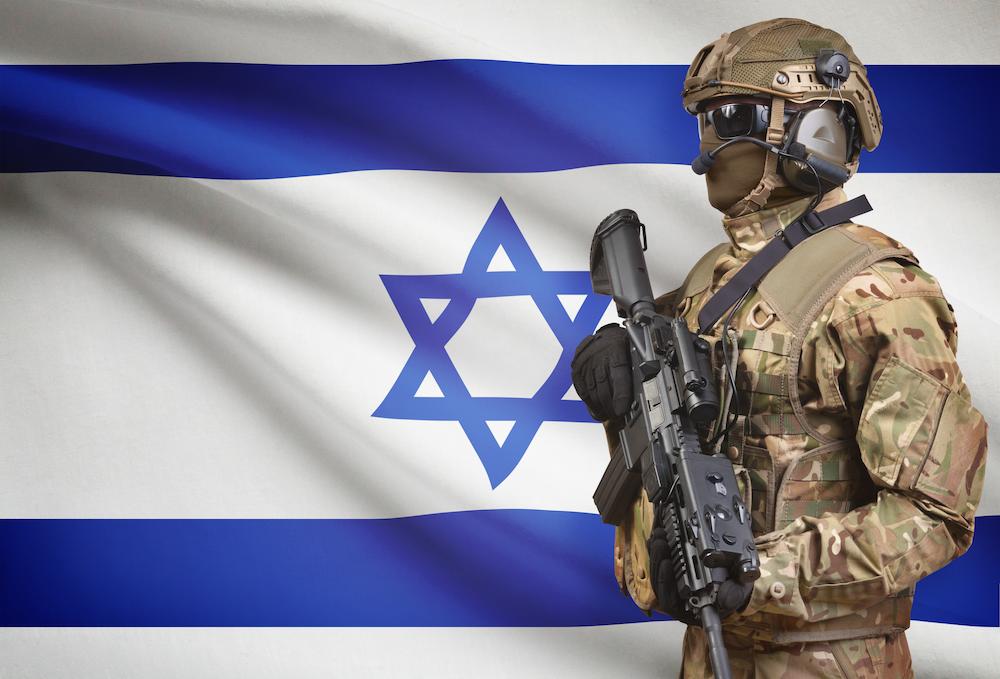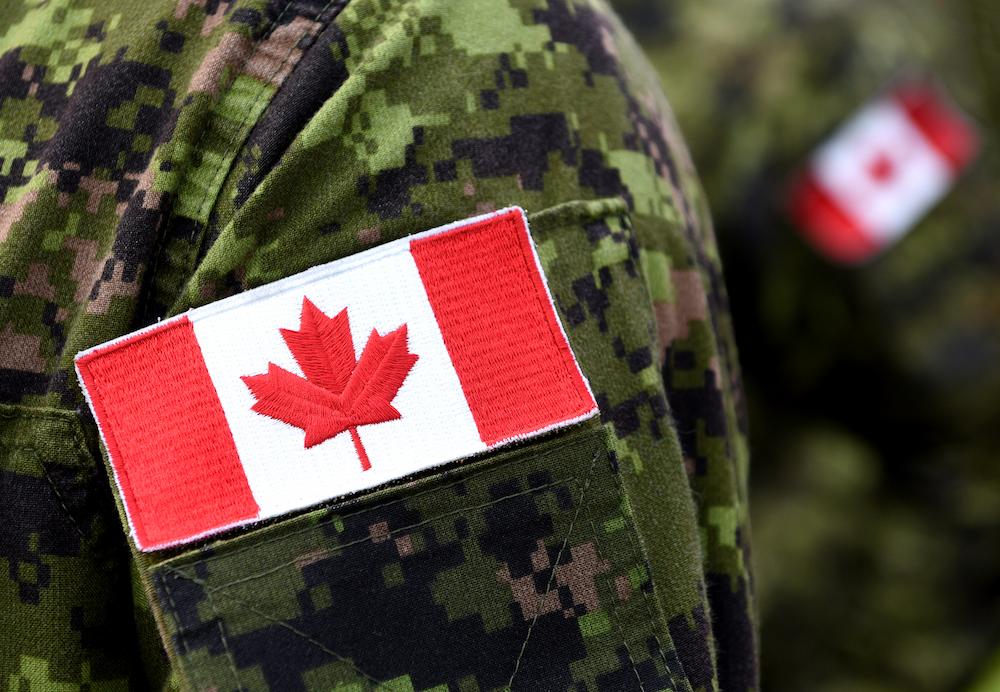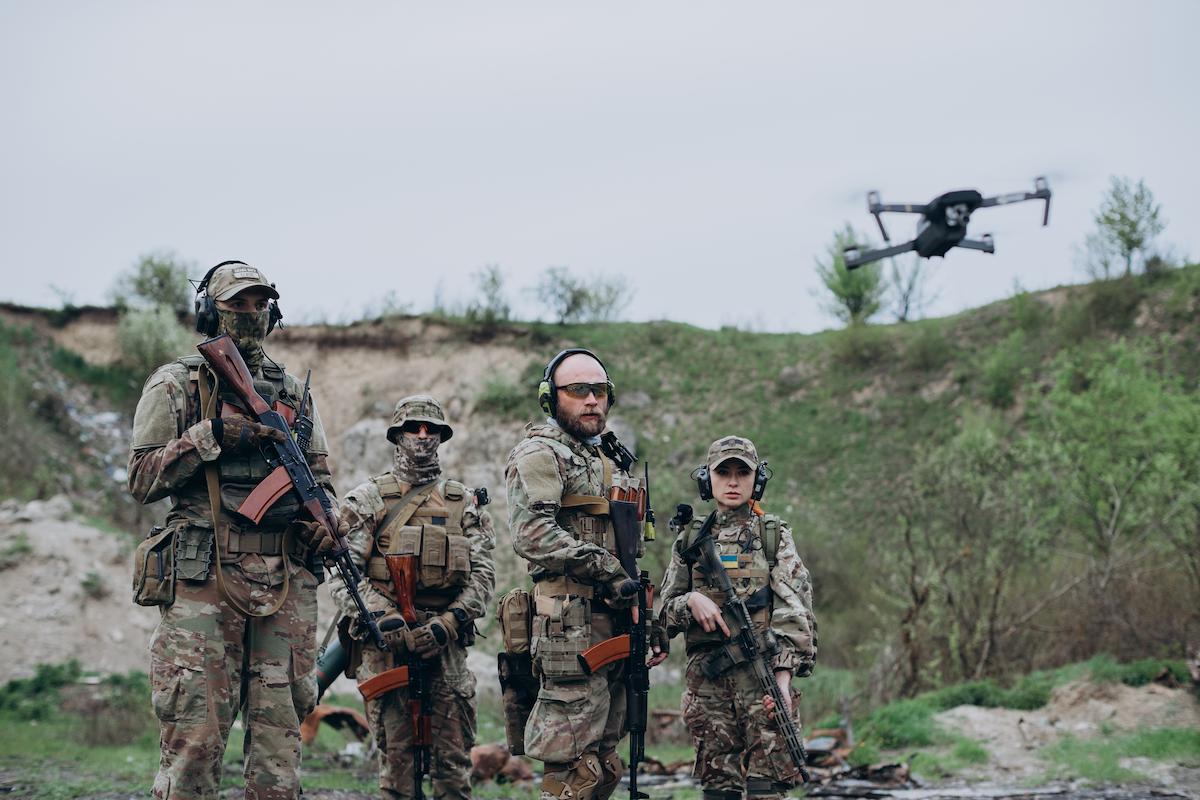Uncrewed Aerial Vehicles (UAVs) have emerged as a game-changing asset for defense forces worldwide. During the 2025 UAV Technology USA Conference, representatives from Israel, Canada and Ukraine discussed how each of their nations have embraced UAV technology to enhance their military capabilities and homeland security in the context of their own unique geopolitical challenges. This article explores the current applications and future prospects of UAVs and how they continue to reshape modern warfare and defense strategies in these three nations.
Israel: Leveraging UAV Technology in a Volatile Region

Israel, situated in one of the world’s most volatile regions, has long been at the forefront of UAV development and deployment. The country’s geopolitical position, surrounded by potential adversaries, has necessitated a robust and technologically advanced military.
Israel’s experience with UAVs dates back decades. During Operation Cast Lead (2008-2009), the first Israeli operation where UAVs, helicopters and fighter jets were allocated directly to ground forces without central command authorization, proved the concept of operations (CONOPS) for UAVs to provide close support to brigade combat teams. This UAV integration significantly enhanced situational awareness and the ability to strike time-critical targets.
The current conflict has only intensified the country’s reliance on uncrewed systems (UxS). Open source reporting estimates that up to 80% of all of the Israeli Defense Force’s (IDF) flight hours are uncrewed. Today, the IDF utilizes UAVs for a wide range of missions, from intelligence gathering to combat operations.
Real-time Battlefield Intelligence
The IDF employs UAVs to gather real-time battlefield intelligence, crucial for informed tactical decision-making. This capability allows Israeli forces to monitor enemy movements and positions continuously with up-to-date information that can be used to adjust military strategies during ongoing operations.
Target Acquisition and Designation
UAVs assist in target acquisition and designation for precise strikes against enemy positions. Accurate UAV-sourced targeting data helps ensure minimal collateral damage, reduces risks to friendly forces and helps validate high-priority targets during military operations.
Battle Damage Assessment (BDA)
UAVs provide data for accurate BDAs (evaluations of the effectiveness of military strikes). This capability allows Israeli forces to quickly assess operational impacts and make adjustments to future missions based on real-time battlefield feedback.
Close Air Support (CAS) for Ground Troops
As mentioned, UAVs provide CAS to ground troops through real-time surveillance and targeting capabilities. This enhances troop safety and combat effectiveness in dynamic and contested environments.
Border Surveillance
UAVs provide support to border surveillance by monitoring Israel’s extensive borders to detect and deter potential threats. This includes tracking movements along the Gaza Strip and Lebanon borders, where UAVs help maintain security by providing early warnings of potential incursions or attacks.
Looking ahead, Israel is focusing on several key areas to enhance its UAV capabilities:
- Antifragile Systems: Israel aims to develop UAV systems that are resilient and adaptable, capable of operating in challenging environments and withstanding enemy countermeasures.
- Artificial Intelligence (AI) and Autonomy: Increased integration of AI and autonomous capabilities to enable more efficient and effective drone operations remains a priority.
- Swarm Technology: Israel is exploring the use of drone swarms, which can overwhelm enemy defenses and provide unprecedented situational awareness.
- Counter-UAV Systems: As adversaries also adopt drone technology, Israel is investing in systems to detect and neutralize enemy UAVs. The country conducted a series of operational tests to prove its capability to intercept uncrewed aircraft and missiles.
The BL (Bottom Line): Israel’s extensive experience has positioned the country as a global leader in UAV technology and operations. The IDF’s use of drones has evolved significantly over the years. Recent conflicts have reinforced the strategic importance of UAVs in Israeli military strategy. Expect Israel’s reliance on UAVs to grow, given its plans for ongoing investments in AI and autonomous technologies.
Canada: Expanding UAV Capabilities for Vast Territory Surveillance

Canada, with its enormous landmass and extensive coastlines, faces unique challenges in terms of territorial surveillance and security. The Canadian Armed Forces (CAF) are in the process of significantly expanding their UAV capabilities to address these challenges and modernize their military.
Canada is in the early stages of implementing a major UAV program focused on acquiring MQ-9B SkyGuardians. The CAF signed a $2.49 billion package for these birds in December 2023 and is currently in the implementation phase. The CAF should receive its first 14 aircraft by 2026. It has wide-ranging plans to utilize them for a variety of strategic purposes.
Maritime and Arctic Surveillance
Canada intends to use drones for maritime and Arctic surveillance, which is crucial given the country’s vast coastlines and significant Arctic territory. This will involve monitoring ship traffic, ice conditions and detecting pollution or oil spills in the Arctic region. The drones will augment existing aircraft under the National Aerial Surveillance Program, providing enhanced capabilities for surveillance in remote and challenging environments.
Domestic Security Operations
Domestic security operations will also benefit from drone technology, such as law enforcement surveillance and monitoring of sensitive areas.
Support for Search and Rescue (SAR) Missions
Drones will play a role in supporting SAR missions, particularly in remote or hard-to-reach areas. Their ability to fly longer and farther than manned aircraft makes them ideal for locating missing persons or assessing environmental conditions during emergencies. This capability will enhance Canada’s response to emergencies across its vast territory.
Environmental Monitoring
Environmental monitoring is another key area where drones will be utilized. They will help in detecting pollution, surveying ice conditions and monitoring marine habitats in the Arctic. This will contribute to better environmental management and conservation efforts in Canada’s northern regions.
Potential International Deployments
The CAF are also considering potential international deployments of their drones. The acquisition of MQ-9B Reapers suggests that Canada aims to enhance its participation in joint intelligence, surveillance and reconnaissance (ISR) operations and otherwise contribute more effectively to international missions and coalition operations.
Canada’s future UAV strategy includes:
- Multi-Role Capability: The MQ-9B drones will be equipped for various missions, from surveillance to potential combat roles.
- Arctic Operations: Developing UAVs capable of operating in the harsh Arctic environment is a key priority for Canada.
- Integration with Existing Forces: Canada aims to seamlessly integrate UAVs with its manned aircraft and naval assets for comprehensive situational awareness.
- Domestic Industry Development: The UAV program is expected to boost Canada’s domestic aerospace industry, potentially leading to future innovations in drone technology.
The BL: The CAF are embarking on a significant expansion of their UAV capabilities with the acquisition of MQ-9B Reaper drones. This Remotely Piloted Aircraft System (RPAS) will enhance Canada’s ability to conduct long-range surveillance and precision strikes for both domestic and international operations. The drones will be used for maritime and Arctic surveillance, domestic security operations, SAR missions, environmental monitoring and potential international deployments. The program aligns with Canada’s Strong, Secure, Engaged defense policy, aiming to modernize the military and contribute to joint ISR operations with allies. The full operational capability of the RPAS is expected by 2033.
Ukraine: Leveraging UAVs in Active Conflict
Ukraine’s ongoing conflict with Russia has thrust the country into the spotlight as a real-world testing ground for modern drone warfare. Ukrainian forces have rapidly adapted and iterated in their use of UAVs. Dubbed “the first real drone war,” the Ukraine-Russian war has highlighted the critical role of these systems in contemporary conflicts.
Ukraine’s use of drones in its ongoing conflict with Russia has been pivotal. Drones have played a crucial role in various military operations. Here’s an expanded view of each of these uses:
Reconnaissance and Intelligence Gathering
Ukrainian forces rely heavily on drones for reconnaissance and intelligence gathering. These drones provide real-time battlefield intelligence and help Ukrainian troops identify enemy positions and movements.
Artillery Targeting and Correction
Ukrainian forces use drones extensively for artillery targeting and correction. By providing precise coordinates of enemy positions, drones enable Ukrainian artillery units to strike targets more effectively. This capability has proven crucial in countering Russian artillery superiority. The use of drones has significantly enhanced the accuracy of Ukrainian artillery strikes, which allows for more efficient use of limited ammunition resources.
Electronic Warfare (EW)
While Ukraine faces significant challenges from Russian EW, Ukrainian forces have also employed drones in EW roles. An ongoing battle against Russian jamming tactics have forced Ukrainian drone operators to adapt and innovate. Ukraine has focused more on developing countermeasures to Russian EW, such as using jamming-resistant fiber-optic drones.
Direct Attacks on Enemy Positions and Equipment
Ukrainian forces have used drones to conduct direct attacks on enemy positions and equipment. This includes the use of first-person-view (FPV) drones, which have proven effective in targeting Russian tanks and other armored vehicles. These drones, often modified from civilian models, carry explosives and are used in precision strikes. Despite their limitations, such as vulnerability to weather conditions and EW, FPV drones have become a crucial component of Ukraine’s military strategy, as they allow for rapid and flexible responses to enemy movements.
Ukraine faces significant challenges in operating drones, particularly due to Russia’s advanced EW capabilities. To counter these challenges, Ukraine has developed innovative solutions, including:
- Frequency Hopping: Implementing frequency hopping technology to protect UAVs from jamming and interception.
- GPS-Denied Operations: Developing systems that allow UAVs to operate without relying on GPS, which is often jammed or spoofed by Russian forces.
- Mesh Networks: Utilizing advanced networking technologies to maintain communication and control of UAVs in contested environments.
Ukraine’s experience in active conflict is shaping its future UAV strategy:
- Increased Autonomy: Developing more autonomous UAVs to reduce reliance on vulnerable communication links.
- Swarming Technology: Exploring the use of drone swarms for overwhelming enemy defenses and conducting coordinated operations.
- Counter-EW: Investing in technologies to detect and neutralize enemy electronic warfare systems.
- Integration with Ground Forces: Enhancing the integration of UAVs with ground units for improved coordination and effectiveness.
The BL: Ukraine’s use of UAVs has been pivotal in its ongoing conflict with Russia. Drones have played a crucial role in reconnaissance, artillery targeting, EW and direct attacks on enemy positions. Ukrainian forces have effectively integrated drones into their military operations, using them to gather real-time battlefield intelligence, guide artillery strikes and conduct precision attacks. The use of drones has allowed Ukraine to adapt to Russia’s EW tactic by employing strategies like frequency hopping to maintain operational effectiveness. Additionally, Ukraine has developed innovative tactics, such as using drone swarms and AI-enabled systems, to counter Russian defenses and enhance its military capabilities.
An Around the World Comparison And What It All Means
All of these examples demonstrate how Israel, Canada and Ukraine are leveraging UAV technology to enhance their defense capabilities, conduct successful military operations and adapt to evolving security challenges. While they all recognize the importance of UAVs in modern defense, their approaches and priorities differ based on their unique geopolitical situations:
- Israel focuses on maintaining technological superiority in a hostile neighborhood, emphasizing combat-capable drones and advanced AI integration.
- Canada prioritizes long-range surveillance and multi-role capabilities to monitor its vast territory and support various domestic and international missions.
- Ukraine, driven by immediate conflict needs, emphasizes rapid innovation, EW resistance and integration with existing forces.
The experiences of Israel, Canada, and Ukraine, while different, all demonstrate the versatility and growing importance of UAVs in modern defense strategies. From active combat zones to vast territorial surveillance, drones have proven to be indispensable assets.
As these nations continue to invest in and develop their UAV capabilities, expect to see further innovations in drone technology, autonomy and integration with other military systems.
The future of defense will undoubtedly be shaped by the continued evolution of UAV technology and a global shift towards more uncrewed and autonomous systems in military operations. As geopolitical tensions persist and technology advances, the role of UAVs in defense and homeland security will only grow more significant.

